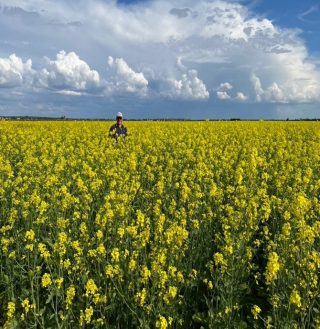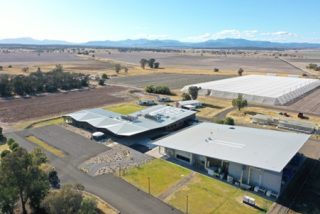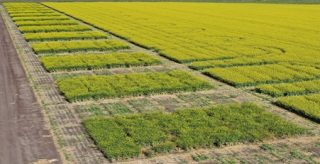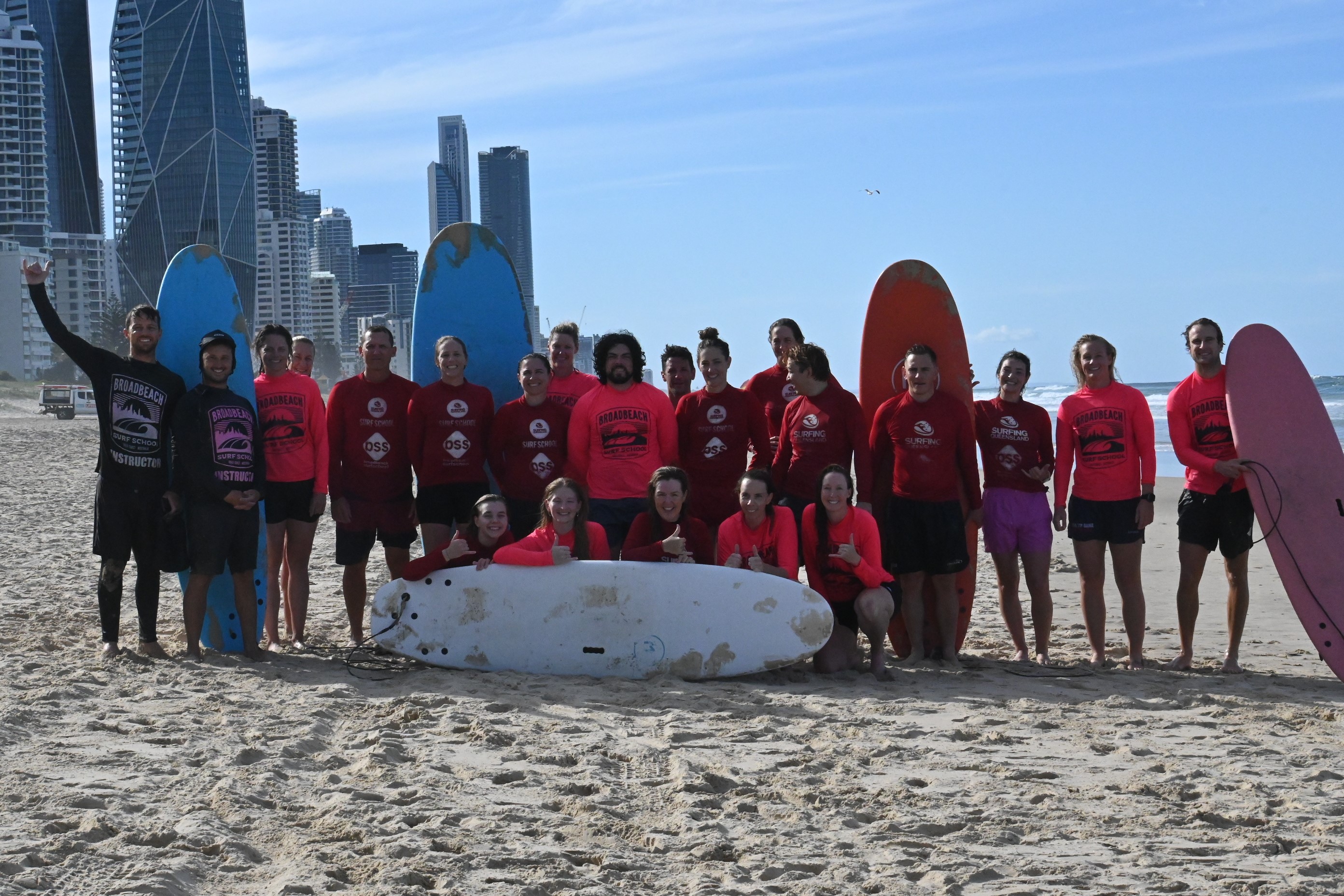It takes a lot to excite a veteran researcher like Graeme Rapp from the Plant Breeding Institute (PBI) at the University of Sydney.
In 2019, however, a familiar tingling ran down Mr Rapp’s spine when he saw one of his Indian mustard trial plots inching skywards, dwarfing a thirsty canola crop on the same parcel of land.

It wasn’t just that the Indian mustard – an oilseed crop related to canola with a similar, yellow flower – was thriving in the hot, dry conditions.
According to Mr Rapp, there was also a mounting body of work suggesting there could be wide commercial and industrial applications for Indian mustard, ranging from food and fibre to bioplastics, pharmaceuticals, and remediation of land contaminated with some heavy metals.
“For many farmers, the 2019 drought was the worst thing but for us it was the best, because we were able to show under harsh environmental conditions that commercially significant tonnages of seed can be produced from Indian mustard,” Mr Rapp said.
“Australia is a hot and dry continent, so we need to have crops that are suitable for those conditions with less reliance on irrigation.
“Also, in a climate-change context, I doubt that 2019 is going to be seen as an unusual year.”
Mission: to improve the nation’s crop and horticultural species
From its 1973 establishment in the Faculty of Science, the PBI’s mission has been to improve the nation’s crop and horticultural species using the best available technology.

The institute’s Narrabri campus, located 600kms from Sydney on the north-western plains of NSW, has 700ha of fertile, irrigable land available for its plant breeding research, including yield and quality testing as well as pure seed production.
The location and its parched climate made the facility a perfect testing ground for Indian mustard – a cross between black mustard and field mustard.
Field mustard is one of the parents of canola and prospers in a wet environment, in contrast to black mustard’s origin from the plains of Iran and desert areas of north Africa.
The combination of the two lines was identified in the 2017 Coriolis report for the Federal Government as an emerging agricultural industry with high growth potential.
“If you drew a line across Australia through Dubbo, you’d grow the Indian mustard crop to the north and canola to the south, although there are some marginal areas of South Australia and Western Australia that may come into play (for Indian mustard),” Mr Rapp said.
“In short, it’s a crop that will survive even the harshest of climates, so part of the research work isn’t just looking at the crop for yield but also for its ability to withstand diseases into the future and hot and dry conditions.”
160 year relationship with NAB
NAB’s relationship with the University of Sydney is its third-oldest, stretching back 160 years, with the bank’s Chair Philip Chronican visiting the PBI in Narrabri last month to gain insights into crop innovation and commercialisation of plant-derived biofuels.
Mr Chronican said after his visit that there was a lot about the transition to a net-zero economy that was not well-understood.
“The science isn’t perfect and a lot of the technologies don’t yet exist, but the beauty of working with a trusted research partner like the University of Sydney is we can be there alongside the people who are doing the cutting-edge research so that we can understand what opportunities and what possibilities there are,” he said.
“I think one of the things you can only get in a rural setting is that direct interface between the people who are trying to manage the natural environment on a day-to-day basis coming up against industrial issues.
“I don’t know where it lands us, but you can see the passion that people who work with the natural environment as part of their day jobs have for the preservation of nature.
Khan Horne, NAB executive regional and agribusiness who also visited the PBI, said the bank’s traditional credit models and loan-assessment criteria “absolutely stand for existing, proven businesses”.
“But when you now have a transition, it would be quite natural for a bank to take time to get to know and understand it because we’re not scientists or engineers; we’re bankers,” Mr Horne said.
“However, there is a role for private equity, government and NAB lending, and that may not always be in the order that some of our customers want.”
The Indian mustard project is a collaboration between the University of Sydney, which focuses on growing the crop, and Dr Lucie Coniglio of the University of Lorraine in France.
Dr Coniglio’s work ranges from deployment of a plant-based biorefinery aimed at producing bioenergy carriers (ethyl biodiesel, bioethanol, biogas and biohydrogen), energy (heat and electricity from cogeneration of agricultural waste), and making high value-added bioproducts (antifungals, biopesticides, biofertilisers, biolubricants and bioplastics) based on the circular economy.

Mr Rapp’s research, which is supervised by Professor Richard Trethowan, the noted wheat breeder and PBI head at Narrabri and Cobbitty in NSW, has already indicated that the plant has about a half of canola’s moisture requirement.
Not only that, but two PBI lines are different to current Australian lines and protected by plant breeders rights – a kind of intellectual property right – with two more expected to receive protection in 2024.
These lines have been found to create economic value, yielding between a tonne and a tonne-and-a-half per hectare in difficult conditions.
Enhancing crop resilience
Unsurprisingly, one of the project’s ambitions is to enhance the crop’s resilience, enabling it to yield under even harsher conditions as average global temperatures continue to climb.
In a fundraising document to extend its mustard research and attract commercial partners, the PBI says it has “taken the ancient fundamentals of mustard and bred new resilience and productivity into a new variety”.
The document also suggests the crop shows potential in a pharmaceutical context, as well as a biolubricant, bioplastic and biofuel.
It further says that while traditional mustard crops in Australia currently yield less than 5000 tonnes a year, or just 0.12 per cent of the total domestic rapeseed market, new Indian mustard has the potential to yield “hundreds of thousands of tonnes”, producing a range of processed, value-added products.
A new industry for regional NSW and its communities is envisaged, given how rare it is for a crop to offer flexibility and the potential for spin-offs.
“Let me stretch your imagination a bit – think bioplastics and the aircraft industry,” Mr Rapp said.
“I have an adopted daughter in the US who is an aeronautical engineer working at the University of San Diego, and she tells me that airframes and wind frames can be developed from bioplastics.
“It would take a fair bit of work to sort it all out, but you can immediately see the potential.”
Mr Rapp said it was difficult to predict the best and most lucrative use of the crop, for a number of reasons.
First, canola has had the benefit 60-70 years of consistent research, while Indian mustard was in its relative infancy with only about two decades of sporadic research.
Second, the Brassica family including Indian mustard has 200-or-so unidentified compounds, so full commercial exploitation is a long way off.
The PBI is taking a multi-faceted approach to determining the crop’s potential.
It wants to develop a better understanding of the genetics and the agronomy, or management of the soil and crop production, as well as identify value-added products and explore the unknown compounds.
Further research and partnerships needed
The project has received three serious approaches from potential partners, including one international group and two local companies.
A seed-license contract has been signed, and other interested parties are seeking similar arrangements.
“Conservatively I’d say there’s at least 100 years more research in this,” Mr Rapp said.
“So I’m going to be long gone before this all comes to fruition.”
The information contained in this article is based upon sources believed to be reliable but which have not been independently verified. Opinions or ideas expressed may not necessarily be those of National Australia Bank Limited (“NAB”) nor may they necessarily reflect NAB’s views or endorsement. This article is for informational purposes only.








